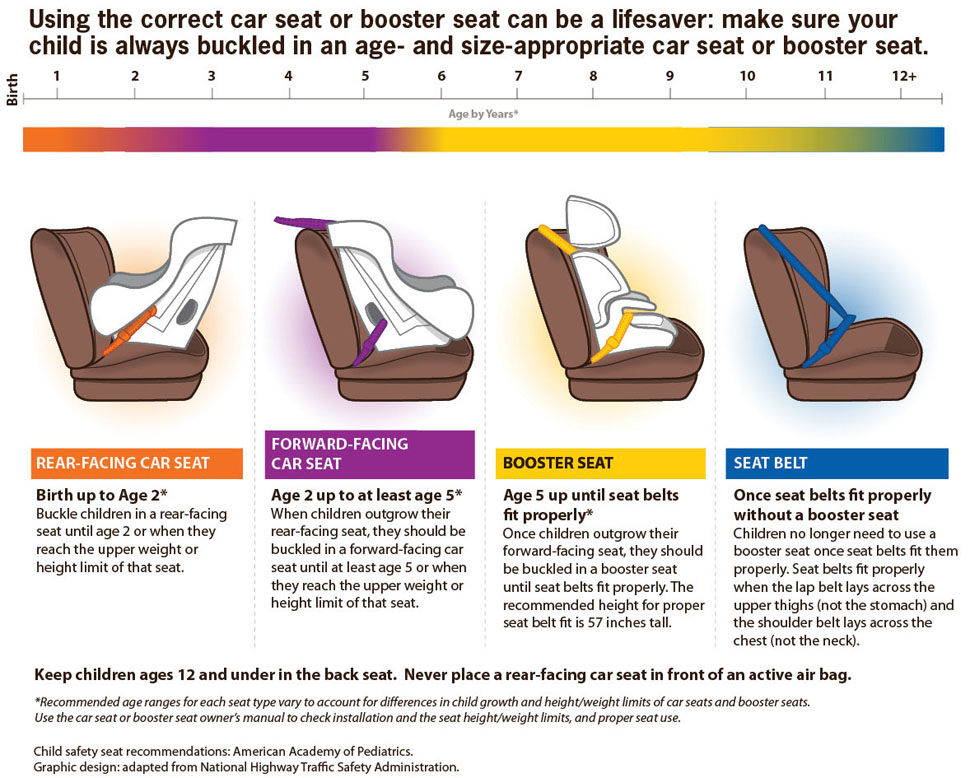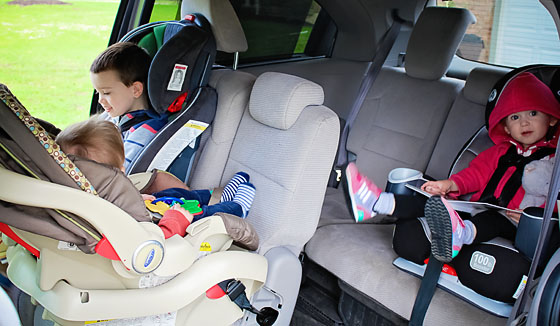Car seat guidelines have changed dramatically in recent years. For instance, the AAP now recommends that babies continue to ride in their rear-facing seats until age 2 (at least!). However, after your child's second birthday, there are still strict safety rules you need to follow.

After your child turns 2, the AAP advises continuing to use the rear-facing seat until he or she exceeds the manufacturer's recommended height and weight limits. Once that happens, you can then switch your child's seat to forward facing.
Once you've made the transition, plan on using the forward-facing car seat with a harness for as long as possible, up to the highest weight or height allowed by their car seat manufacturer. It is best for children to ride in a seat with a harness as long as possible, until at least to 4 years of age. If your child outgrows his seat before the age of 4, consider switching to another car seat with a harness approved for higher weights and heights, as it's safer.
After your preschooler outgrows their harnessed car seat, you'll then switch to a booster seat.

Booster seats are for older children who have outgrown their forward-facing car seats. All children whose weight or height is above the forward-facing limit for their car seat should use a belt-positioning booster seat until the vehicle seat belt fits properly, which is typically when they have reached 57 inches (4' 9") in height and are between 8 and 12 years of age. As always, you'll find manufacturer-specific safety guidelines in the owner's manual that comes with your car seat.
Once your child outgrows his booster seat, you'll of course begin using a seat belt. Seat belts are made to fit adults -- which is why your child must use a booster seat until he reaches the proper size. When children are old enough and large enough to use the vehicle seat belt alone, they should always use lap and shoulder seat belts for optimal protection.
As a note: once kids graduate to wearing a seat belt, they are technically big enough to ride in the front seat. However, because of airbags, it's much safer to continue to have younger-aged kids ride in the back.
If you have any questions on car seats, call:
For in-person assistance, visit your local fire station. There, you'll also be able to have your seats checked for proper installation.
Photo Credits: CDC, Sarah M.
Sources: 1. CDC, 2. AAP.
Tags : car seat safety, car seats, booster seats, new guildelines, AAP, CDC, safe driving, kids
 July 15 at 9:00am · Share July 15 at 9:00am · Share
|